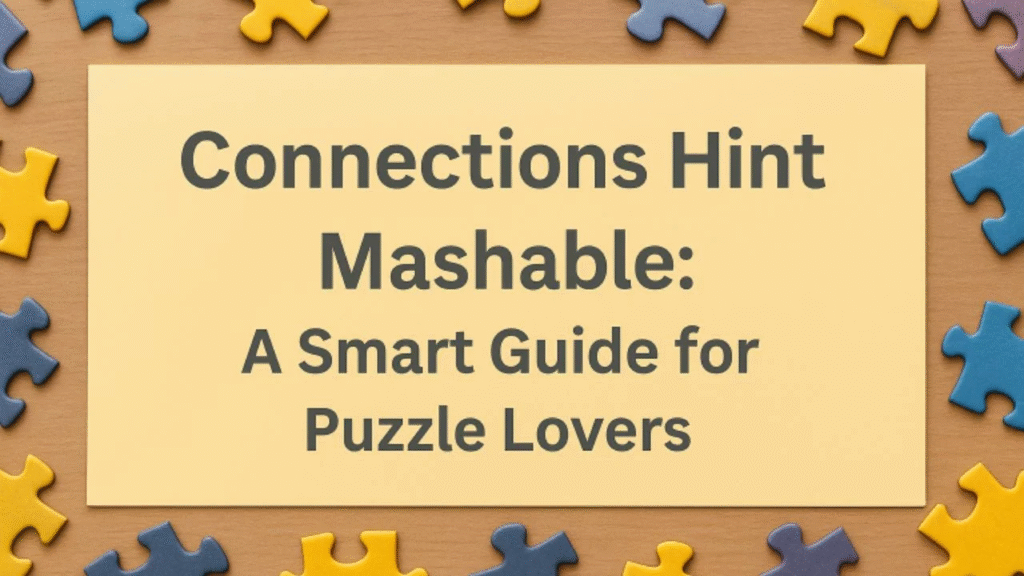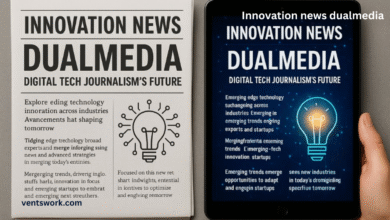Mastering Connections Hint Mashable: A Deep Dive into the Puzzle Phenomenon

Connections hint mashable, puzzles have carved out a beloved niche among readers and casual gamers alike. One such format that has captured widespread attention is the “Connections” puzzle—an engaging word-association game that challenges players to categorize related terms from a pool of sixteen. As these puzzles gain popularity, platforms like Mashable have risen to the occasion by offering daily hints to assist users without spoiling the fun. These hints strike a perfect balance between challenge and guidance, making them a go-to resource for puzzle fans of all skill levels.
Mashable’s “Connections hint mashable” column has turned into a viral daily ritual for thousands who eagerly anticipate a little help with their brain teasers. Its growing audience spans both beginners who need a nudge and veterans seeking confirmation of their gut feelings. By fusing interactive content with editorial flair, Mashable has built a unique space where journalism and gamification intersect seamlessly.
This article explores the phenomenon of “Connections Hints” on Mashable. We’ll unpack how the game works, Mashable’s approach to giving hints, effective strategies for decoding them, and their broader cultural impact. Whether you’re a new player or a puzzle pro, understanding this feature can enhance your gameplay—and maybe even your love for word games.
Understanding the “Connections” Puzzle Format
The “Connections” puzzle format is a fresh yet familiar concept rooted in word association and logic. Originating from The New York Times, this game presents players with 16 seemingly unrelated words. The objective? Group them into four categories of four words each. These groupings can be based on anything from synonyms and pop culture to historical references or idioms. The game is simple in premise but often deceptively complex in execution.
Mashable’s version of Connections doesn’t host the puzzle directly but provides daily hints for The New York Times version, helping users connections hint mashable make sense of the game’s intricacies. What makes this game even more engaging is its tiered difficulty system, often color-coded—Yellow (Easy), Green (Moderate), Blue (Hard), and Purple (Tricky). This format encourages players to flex different parts of their cognitive abilities, from basic language skills to more abstract reasoning.
Hints play a critical role in enhancing this experience. Rather than spoiling the game, they act as mental guideposts. Some hints give direct clues to a category’s theme, while others encourage players to look at the words from a different angle. These hints have become especially popular for players who don’t want to resort to full answers but need a slight push to continue. As puzzle literacy increases among readers, hints like these are reshaping how casual gaming fits into daily digital routines.
Mashable’s Editorial Approach to “Connections” Hints

Mashable has taken a thoughtful editorial approach to crafting hints for the “Connections” puzzle. Each day, their team publishes structured hints that tease the connections hint mashable groupings without giving away the answers. Typically, hints are offered in the form of category descriptions, such as “Types of Dance” or “Words Related to Weather,” giving players just enough to jog their memory without undermining the challenge.
The hints are laid out clearly and often come with a tiered approach, beginning with general nudges before offering more specific help. This format caters to a wide range of users—from novices just getting into the game to seasoned players who want to test themselves without peeking at the final solution. It’s a careful editorial balance: too vague, and the hint is unhelpful; too direct, and it becomes a spoiler.
One of Mashable’s most notable features is its writing style. The hints are conversational, often laced with humor or cultural references, making them feel less like instructions and more like guidance from a clever friend. This connections hint mashable tone is deliberate—it ensures that even if you’re stuck, you’re still enjoying the journey. Mashable has essentially turned the act of giving a hint into a mini-editorial, rich with personality and insight.
By doing so, Mashable distinguishes itself from basic “answer reveal” sites. Instead of just offering solutions, it fosters deeper engagement, reinforcing its role as both an entertainment and editorial platform.
How to Decode and Use Mashable’s Connections Hints Effectively
Using connections hint mashable effectively is an art form in itself. The first step in decoding these hints is understanding the language of categories. Mashable typically lists four category titles that loosely define the word groupings. For example, if a hint says “Types of Fabric,” you can scan the word list for anything textile-related, like “Silk” or “Denim.” This step requires lateral thinking—sometimes the words aren’t exact matches but are conceptually linked.
Players can benefit from reading the hints carefully, paying attention to tone and word choice. Mashable’s editorial voice often uses slight puns, double meanings, or pop culture nods. These aren’t random—they’re breadcrumbs. For instance, a hint mentioning “Things that POP” could relate to balloons, music genres, or even popcorn. The trick is to interpret the hint’s intention, not just its literal meaning.
Strategically, it’s best to approach the easiest category first—usually Yellow—since solving one group often narrows the field, making the others easier to spot. Once you have a confirmed group, look at what’s left and match words that don’t seem to fit anywhere else; they often belong to the trickier Purple group.
Common pitfalls include overthinking and relying too heavily on one interpretation. If a word fits multiple potential categories, make note and connections hint mashable test combinations. The real value of Mashable’s hints is in helping you trim the possibilities, making the process more about strategy than guesswork.
The Cultural Impact of “Connections Hint” by Mashable
The rise of “Connections Hints” from Mashable reflects a broader trend: the gamification of news media. By incorporating puzzles into editorial content, Mashable has expanded its audience beyond news readers and tech enthusiasts to include casual gamers, students, and puzzle lovers. This daily feature has not only boosted site traffic but also increased reader interaction, with many taking to social media to share their scores, strategies, or frustrations.
This format contributes to puzzle literacy—a growing phenomenon where word games are helping to improve vocabulary, critical thinking, and pattern recognition. Much like the crossword puzzle revolution of the early 20th century, modern digital puzzles are enhancing daily routines with intellectual engagement. Mashable’s approach, rooted in editorial integrity and playfulness, has helped elevate the format from hobby to cultural staple.
Interactive content like this is also shaping how we consume media. In an age of short attention spans, puzzles offer a low-commitment, high-reward experience. They keep readers returning to the platform and encourage daily rituals that increase brand connections hint mashable loyalty. Furthermore, as AI and personalization evolve, we may soon see even smarter hints that adapt to player history and skill level.
Mashable has proven that even simple, well-curated hints can become a media phenomenon when executed with creativity and purpose. It’s not just about solving a puzzle—it’s about being part of a community that thrives on curiosity and cleverness.
Conclusion
Connections hint mashable has become more than a helpful tool—it’s a daily ritual for a growing community of puzzle fans. Its success lies in its strategic editorial design, user-friendly tone, and ability to offer help without taking away the joy of discovery. As interactive media continues to grow, features like this show that even something as small as a daily word game hint can create real engagement and cultural value.
From understanding the core mechanics of the game to learning how to interpret subtle clues, readers can elevate their puzzle-solving experience through Mashable’s hints. Whether you’re solving over coffee or comparing results with friends, these hints help transform casual play into meaningful interaction.
FAQs
Q1: What time are Mashable’s Connections hints usually posted?
Mashable typically posts its hints in the early morning (Eastern Time), aligning with The New York Times puzzle release.
Q2: Are Mashable’s hints the same as spoilers?
No. Hints guide you toward the answer without revealing it directly, preserving the challenge.
Q3: Can I submit my own hint ideas to Mashable?
There’s no formal submission process, but Mashable encourages reader interaction on social media platforms.
Q4: How accurate are the hints in solving the full puzzle?
They’re designed to point you in the right direction while keeping the puzzle experience intact.
Q5: Are Connections hints available on platforms other than Mashable?
Yes, many users also share hints and tips on Reddit, Twitter/X, and puzzle-focused Discord communities.
You May Also Read: https://ventswork.com/pedrovazpaulo-business-consultant/
